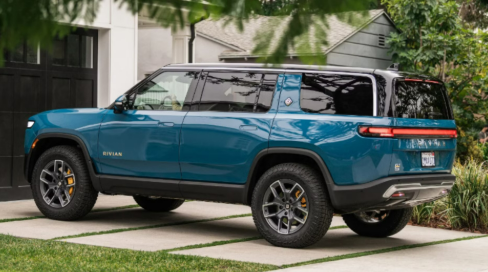Introduction US. EV Market
The electric vehicle US. EV market in the United States experienced a dynamic start in January, revealing mixed registration numbers. While the industry continues to grow, some models gained momentum, whereas others struggled. This article provides a deep dive into the latest EV registration statistics, highlighting five key takeaways that signal an evolving landscape.
Table of Contents
- Overview of January EV Registrations
- Key Specifications of Top-Performing Models
- Factors Influencing EV Market Growth
- Challenges Hindering EV Adoption
- The Future of EVs in the U.S.
- FAQs About the U.S. EV Market
1. Overview of January EV Registrations
January’s EV registration data showcased a diverse market performance. Some automakers reported substantial increases in sales, while others faced declines. Notably, Tesla remained the market leader, but new players, including Rivian and Lucid, gained traction. Hybrid models also saw increased adoption, indicating that consumers are still exploring their transition to fully electric vehicles.
2. Key Specifications of Top-Performing Models
The latest EVs hitting the market feature cutting-edge technology and enhanced performance. Some of the standout models from January’s registration data include:
- Tesla Model Y: High demand with improved range and autonomous features.
- Ford Mustang Mach-E: Strong performance due to price reductions and tax incentives.
- Chevrolet Bolt EV: Affordable pricing remains its key selling point.
- Rivian R1T: Gaining traction in the electric pickup segment.
3. Factors Influencing US EV Market Growth
Several factors played a significant role in shaping January’s EV registration trends:
- Government Incentives: Federal and state-level incentives continue to boost EV adoption.
- Expanding Charging Infrastructure: More public charging stations encourage consumers to switch to electric.
- Rising Fuel Prices: Higher gasoline costs are pushing more drivers toward EV alternatives.
- Improved Battery Technology: Longer ranges and faster charging times make EVs more practical.
4. Challenges Hindering EV Adoption
Despite the growth, some barriers are slowing down EV adoption:
- High Upfront Costs: Many consumers are still hesitant due to the premium pricing of EVs.
- Charging Network Limitations: Rural areas lack sufficient charging infrastructure.
- Battery Supply Chain Issues: Shortages of raw materials impact production capacity.
- Consumer Uncertainty: Many buyers are unfamiliar with EV maintenance and long-term cost savings.
5. The Future of EVs in the U.S.
With increasing investments in EV infrastructure and advancements in battery technology, the US. EV market is poised for continued growth. Automakers are expanding their electric lineup, and government policies are becoming more favorable. By the end of 2025, EVs could represent a much larger share of the total car market.
FAQs About the U.S. EV Market
1. What is the most popular EV in the U.S.?
The Tesla Model Y remains the top-selling EV, followed closely by the Tesla Model 3.
2. Are EVs cheaper to maintain than gas-powered cars?
Yes, EVs have fewer moving parts, requiring less maintenance compared to traditional gas-powered vehicles.
3. What are the best tax incentives available for EV buyers?
The federal government offers tax credits of up to $7,500, with additional incentives available at the state level.
4. How long does it take to charge an EV?
Charging times vary, but fast-charging stations can charge an EV up to 80% in under 30 minutes.
5. Is the US. EV market expected to grow in 2024?
Yes, with increasing investments, better infrastructure, and more affordable models, the US. EV market is projected to expand significantly.
Conclusion
January’s EV registration numbers highlight a shifting landscape in the U.S. automotive industry. While some brands continue to dominate, others are emerging as strong competitors. The future of EVs looks promising, driven by innovation, government support, and growing consumer interest.

